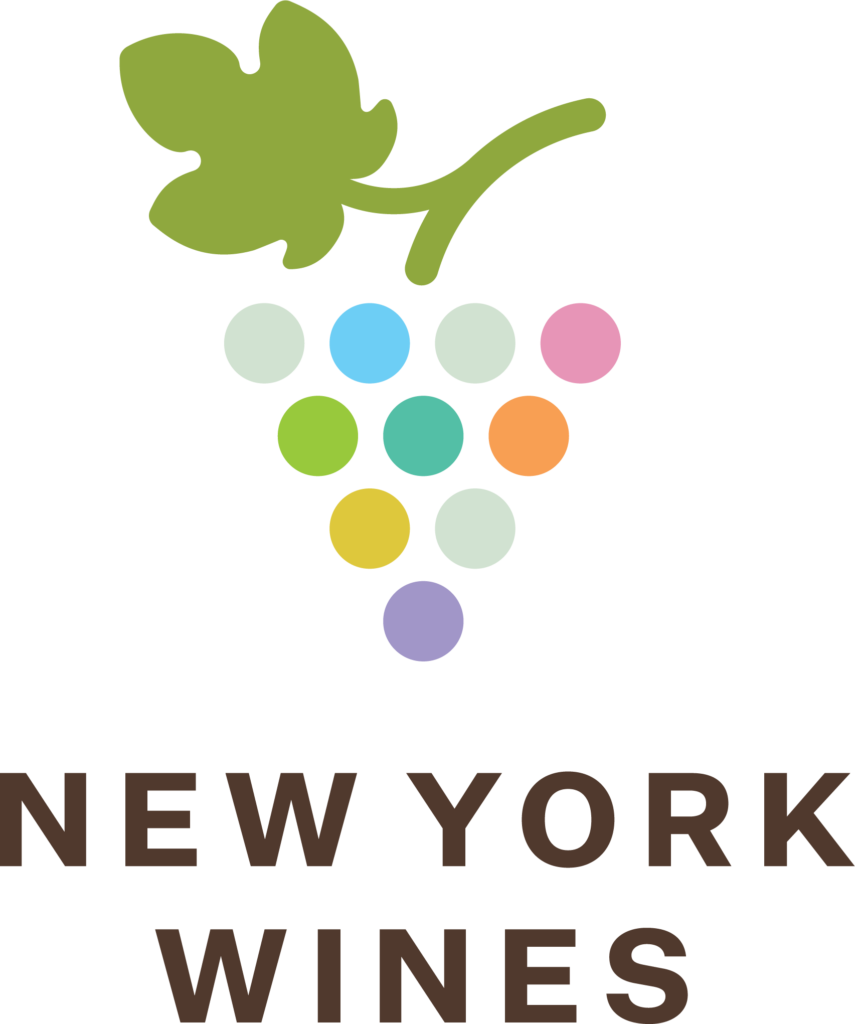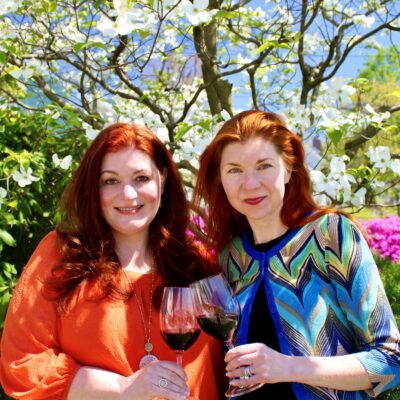In the ever-evolving world of wine and grape production, research plays a crucial role in advancing knowledge, improving practices, and ensuring the sustainability of the industry. NYWGF’s commitment to research is evident in its annual research budget, which typically ranges between $350,000 to $600,000. The NYWGF Board of Directors is proud to share the results of 2023-24 funded research projects through individual reports, articles, and a series of webinars in 2024-25. Featured in this article are two NYWGF funded studies:
- Evaluation of Hybrid Winegrape Varieties on Long Island | Principal Investigator: Alice Wise, Sr. Issue Educator/Viticulturist, Cornell Cooperative Extension of Suffolk County
- Teaching Consumers to Love NYS and Native/Hybrid Grape Wines. The Development of an Executable Education and Communication Strategy | Principal Investigator: Gregory A. Gardner, SUNY Potsdam
We invite you to learn more about these research efforts and stay tuned to our Research page for more details on upcoming webinars.
The Draw of Hybrids
While hybrid varieties were important to the United States in the first half of the 20th Century, improved rootstocks, insecticides and fungicides permitted the return of vinifera varieties to most vineyards. However, American Viticulture would not be where it is today without hybrid grapes bridging our past to our present and they may be the future.
“The vinifera varieties we all know, and love aren’t very sustainable,” wrote Dr. Jamie Goode in a 2020 Vinepair article. “To keep disease at bay, vineyards need to be sprayed [with copper, sulfur or modern fungicides] and this is leading winegrowers to explore the potential for working with hybrids that carry natural resistance to these fungi.”
“The problem? The wine world still has a horrible bias against hybrids, which are regarded as a low-quality option compared with vinifera.” He’s right, it’ll be an uphill battle marketing a new (or old) grape variety—but perhaps this is an opportunity that should be treated with excitement.
According to a May 2022 article by Elaine Chukan Brown for JancisRobinson.com, titled Hybrids Gain Traction: “Some of the skepticism that the fine-wine community has towards hybrids comes from early attempts by producers to work with these cultivars in the vineyard and cellar in ways not conducive to maximizing their quality. For attentive winemakers able to adjust their approach to the characteristics of these hybrids, and the curious wine drinker interested in new taste experiences, hybrids can offer pleasurable wines, often at relatively affordable prices.” Brown goes on to review dozens of hybrid wines from across America.
The stage may be set for a comeback of hybrid varieties.
Today, New York winemakers in (almost) all regions are embracing hybrids once again, for a variety of reasons including quality and climate suitability. They are enthusiastic about producing wine from varieties such as Traminette, Seyval Blanc, Cayuga, Vidal, Vignoles, Baco Noir, Dechaunac, Leon Millot, Marechal Foch, Frontenac and Vincent.
Research and growing trials have certainly improved the quality of hybrids over the years, but they aren’t the predominant reasons many modern winemakers seek these oft-maligned grapes out.
“As our climate changes we’re seeing not just warmer climates, which is generally helping New York growers at the moment,” says Greg Gardner, Professor of Business Administration SUNY Potsdam.
Gardner is currently involved in an ongoing research initiative to study the impacts of global climate change on wine production and wine tourism. “We’re also seeing the arrival of a new set of pests—both microorganisms and insects. We’re seeing changes in weather patterns, more—or less—rain, more hail, earlier bud break followed by painful frosts, earlier harvests, and things of that nature,” he says. “Hybrids are better at surviving those things and dealing with them.”
Reluctant Hybrid Wine Drinkers?
 However, if New York’s wineries embrace hybrids, but wine drinkers are resistant to drinking them, there’s a real problem.
However, if New York’s wineries embrace hybrids, but wine drinkers are resistant to drinking them, there’s a real problem.
Enter market research. Along with his colleagues, Gardner set out to understand the levels of awareness and impressions consumers had of New York State-produced wines in general, and New York State-produced wines from hybrid (and native) grapes specifically.
Through surveys, focus groups, and speaking with wine retail professionals, they created a snapshot of how wine consumers on three different levels—expert (average age 51.6), intermediate (average age 52), and novice (average age 40.5)—are likely to embrace wines made from hybrids as well as native grapes. Their findings are published in the report, Teaching Consumers to Love NYS and Native/Hybrid Grape Wines. The Development of an Executable Education and Communication Strategy.
The focus groups did a blind tasting of well-made wines produced mainly with hybrids or native grapes, but they did not know that until afterward.
“The experts generally said, ‘We knew these were hybrids,’” says Gardener. “The intermediates sort of said they knew, but they were surprised [the hybrids] were so good. The novices didn’t really understand the significance of the wines being from hybrid grapes. They thought they were good.”
While there may be a prevailing belief in the wine industry that wine drinkers are not open to wines made from hybrids, that doesn’t seem to be the case. Rather, education about the grapes and experience with their final product may be what’s needed.
Selling Hybrid Wines May Come Down to Exposure
In the report from their research, Gardner’s group found that “wine novices and intermediates, often reported very little real familiarity with these wines, especially native/hybrids.” They concluded that those demographics stay away from hybrids not because they don’t like them, but because they are not familiar with them.
“I am reasonably optimistic, at least in the median term, people—if they are exposed to good examples of hybrid wines—will like them and will drink them,” says Gardner. “The challenge is getting them to try them for the first time. The novices in particular, especially as their incomes increase and they get older and integrate wine in their lifestyle, I think they will be quite happy to drink these wines and probably prefer them in many cases.”
While the expert wine drinkers in the study were generally “impressed with the quality of the hybrids” they tasted, they are probably not the target consumers for hybrids. The younger, less experienced wine drinkers may be the best groups to go after. They can be hooked by describing hybrids as a unique experience or by telling stories about the wine that relate to their values such as combating climate change or commitment to organic farming.
“One of the things we suspected going in based on other research we had read is that we saw the importance of understanding your customer’s level of expertise. That turned out to have a real significant impact on the way people received these wines,” Gardner says.
Wine Retailers Weigh In
Interviews with wine retail professionals—those on the front lines of selling these wines—confirmed what the scientists found in the research. When asked about the challenges of selling New York State wines made from hybrids (or native grapes), the retail professionals surveyed said it “was easier than expected.”
Indicating that many customers don’t care about specific grape varieties, the lower selling price of wines made from hybrids compared to those made from vinifera was attractive to consumers. Also, using the word “local” rather than hybrid or clone plus good storytelling helped to sell wines produced from hybrid grapes. Finally, trusting the person selling the wine—having a long-term relationship with them—was more important than marketing points.
“I now believe there is a bright future for wines made from hybrids and native grapes. I think that as climate change continues to progress those grapes are going to become more and more important to New York and also many other places in the world,” Gardner says.
Are Hybrids Right for All of New York State?
Hybrid wines may have a bright future in New York, but will that future be bright in all regions? A separate experiment conducted by Alice Wise, Sr. Issue Educator/Viticulturist at Cornell Cooperative Extension of Suffolk County, took on growing hybrids on Long Island, where 99% of the grapes currently grown are vinifera. Wise published her findings in a report titled Evaluation of Hybrid Winegrape Varieties on Long Island.
At the Extension, Wise has had a vinifera variety trial for 31 years. More recently, she also planted various small blocks of 12 hybrid winegrape varieties to explore whether they were an option for Long Island and to give growers a preview of what they taste like.

“I explored whether they had anything to offer for Long Island in terms of quality,” she says. “They’re cheaper. Ideally, they’re less expensive to manage and more productive.”
But the question remained: Could they find a fit in the industry in Long Island?
Although there is a little more interest in hybrids than there used to be on Long Island, its winemakers are “very hesitant” to embrace them, according to Wise. Quality and name recognition are the main concerns that keep vintners from planting hybrids in their own vineyards.
Couple that reality with the fact that Long Island winemakers can buy hybrid grapes—if they want to use them—for less money from growers in Upstate New York than they can by planting and producing them on Long Island.
To change that, “it’s going to take some brave soul jumping on board and actually doing it in a commercial way,” Wise says.
While Long Island’s maritime climate protects its vineyards from the damage the rest of the state’s wine regions experience from some extreme weather events, Wise advises there could be some environmental benefits to growing hybrids, especially when it comes to spraying. Hybrid vines can be managed with approximately half of the fungicides needed to grow vinifera. She also believes that continued evaluation is necessary.
But most importantly, her research concluded, “It is essential that these varieties demonstrate they are capable of consistently producing high-quality fruit.”
Hybrids produced in the state are already proving they can do that: Keuka Lake Vineyards’ Leon Millot, a French American hybrid, recently walked away with the Best Red Wine Award at the 2022 New York Wine Classic.
About our Research Program
Since its creation in 1985, NYWGF has sponsored an ambitious and comprehensive program in close coordination with the industry and academia. As with the promotion program, private sector funding is required to leverage the state matching funds. NYWGF’s annual research budget is normally between $350,000-$500,000 to support dozens of individual projects, mostly conducted by Cornell University’s New York State Agricultural Experiment Station in Geneva.

